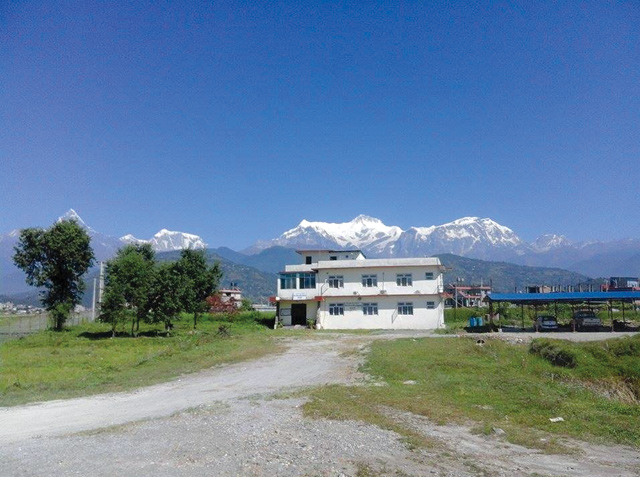On Nepali New Year 2073 on Wednesday, Prime Minister KP Oli will lay the foundation for Pokhara International Airport, bringing Central Nepal and the tourist city nearer to a long cherished dream of having its own aviation gateway.
As far back as 1970 a Japanese company was commissioned to do a detailed survey for an airport with a runway long enough for large jets. A few years later, the Pacific Area Travel Association (PATA) suggested that Pokhara needed a bigger airport, keeping future traffic in mind.
Some key Pokhara personalities started lobbying for an international airport, and in 1976, the government acquired 3,106 ropani of land east of the city and along the highway to Kathmandu.
Inexplicably, work on the airport didn’t get underway even though every prime minister from the absolute monarchy days to the era of democracy visiting Pokhara have reiterated the commitment to build it.
It took nearly 28 years for the government to even make a call for proposals based on the BOOT (Build, Own, Operate and Transfer) model. Two Korean companies showed interest, but the government was apathetic, and that was that.
In 2009, the elected Maoist government led by Pushpa Kamal Dahal finally gave the go-ahead for the Pokhara International Airport. Later that year, the UML’s Madhav Kumar Nepal decided to set aside $50 million unspent from the Upper Trisuli Hydro Project and requested the Chinese Exim Bank to invest in the airport as it had invested in the Upper Trisuli as well. It proposed a $215.95 million project with a 3,000m runway with a parallel taxiway, two terminals, a hangar, cargo terminal, radar and air traffic control equipment, able to accommodate Airbus 320s and Boeing 757s.

The delays angered the business community and the people of Pokhara who had hoped that the airport would bring new prosperity to their city. They staged a series of protests and hunger strikes in 2013, but the government in Kathmandu remained impervious.
Just when the hope was about to die again, there was a new sense of urgency. The closure of Kathmandu airport for four days in the peak tourism season in March 2015 after the runway was blocked by a Turkish Airbus 330 focused everyone’s attention to the need for an alternative airport. A month later, the earthquake proved just how vulnerable Nepal was having only one international airport to handle relief and rescue. Kathmandu airport was so crowded, relief planes had to be sent back. The third factor was the Indian blockade, which underlined the need for aviation to reduce the dependence on surface transport for trade.
The new airport will handle domestic flights as well as direct links for tourists who want to bypass Kathmandu, and will also cater to passengers from central Nepal flying to the Gulf or Malaysia.
Nepal signed a soft-loan agreement with China Exim Bank during PM Oli’s recent visit to China, and it looks like the airport construction is finally getting the green light. Land for the airport has already been acquired and their owners, compensated.
A contractor has been hired, preparations for the construction of the airport are now over. There is local support for the project, and in fact Pokhara will launch big protests if the airport gets stuck again.
